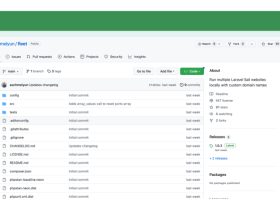The omicron variant, first identified in South Africa in November 2021, spread to the rest of the world, including the Latin America and Caribbean (LAC) region. Countries were urged to step up their surveillance and sequencing efforts. The situation quickly became overwhelming, even for countries with more advanced testing systems in LAC, like Uruguay. From the beginning of December 2021 through the beginning of February 2022, the country tested 43 people for every case that was discovered. This number dropped to less than 3 in the following year.
Despite a decline in COVID-19 cases around the world from their peak in early 2022, five omicron subvariants are still circulating as of December 2022. As 2023 begins, we’re seeing an abrupt increase in reported cases.
The pandemic and other global crises, such as the conflict in Ukraine and rising inflation, have had severe and far-reaching consequences. Even though LAC’s GDP shrank by 7% in 2020 because of the pandemic, it recovered most of those losses in 2021, GDP growth in 2022 was modest, and GDP growth projections for 2023 and 2024 are even lower. Another potential threat to regional economic growth is a spike in COVID-19 infections.
To safeguard human capital and economic activity from public health threats like SARS-CoV-2, testing and population-level surveillance activities are often overlooked but integral parts of national strategic plans for prevention and response. Public health responses can benefit greatly from data and evidence gleaned from testing and surveillance activities as part of a national strategy, as this information can help inform preventative rather than curative policies and practises. However, what does this actually entail, and how does it function?
In practise, this entails using both passive and active testing and surveillance methods to guide resource allocation, gain insight into transmission dynamics, back up vaccine and genomic surveillance, and track changes in population immunity.
Combining elements of both passive and active forms of surveillance
The World Bank has published a guide with actionable information that can assist governments in monitoring SARS-CoV-2 and population immunity, preventing further pandemic waves, prioritising populations for vaccination and protective measures, and deciding on proactive public health measures to mitigate the effects of the pandemic in various communities.
In order to gather information, passive surveillance techniques use preexisting infrastructure, data, and/or samples. Topics discussed in the manual include:
- Monitoring of Syndromic Risk
- Serosurveillance
- Security based on monitoring of wastewater
- Hospital-based monitoring
- Methods of monitoring deaths
- Genealogical watch
The data collected through active surveillance are less prone to bias and allow for the proactive, data-driven customization of responses, but the implementation of such activities is generally more costly and time-consuming. In this manual, you’ll find information on:
- Finding and testing points of contact
- Continuous monitoring in high-threat areas
- Particularized monitoring and diagnostics
- Censuses, polls, and sentinel observations of the general populace
- Epidemiological studies with a future focus
Surveillance with a Preventative Methodolog
The World Bank’s guide for effective national testing and surveillance strategies for COVID-19 in LAC provides practical advice based on best available international experience for countries to develop proactive strategies that will help them respond to COVID-19 and future public health threats.
Also Read :Working Together for the Global Soft Power of Higher Education The CAMPUS FRANCE FORUM
The document discusses key factors for governments to consider when designing and implementing preventative testing and surveillance programmes:
Health information and human resources, both in terms of their availability and the scope and depth of both, and the quantity needed to implement various strategies.
Definition of priority testing and surveillance activities to be carried out and the populations to be targeted relies heavily on good governance, the use of the best available data, and the involvement of stakeholders.
Successful implementation relies on a number of factors, including but not limited to laboratory infrastructure and capacity, supply chain reliability, transportation networks, human resources, and surveillance infrastructure and data communication.
Continuous evaluation and learning to improve strategy implementation is crucial.
According to a recent World Bank report, Latin American and Caribbean health systems can be made more resilient if they invest in and implement proactive, population-based surveillance strategies.
The chain of detection and response to public health threats includes surveillance as a key link. However, as we saw with Ebola and mpox in 2022, these dangers can arise at any time and place. Supporting the continued response to public health emergencies, strengthening the resilience of health systems, and protecting human capital and the economy can be achieved by developing infrastructure and implementing surveillance activities at the population level.







Leave a Reply